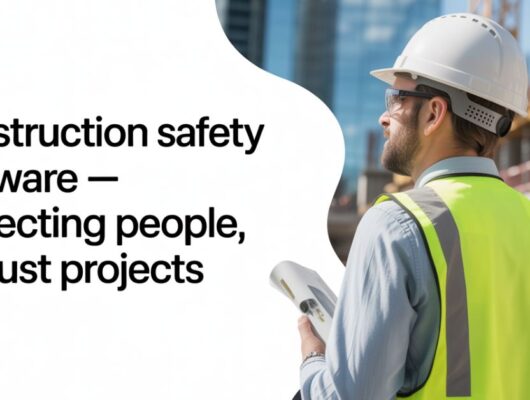Heavy-duty machinery called construction vehicles is made for carrying out particular duties on building sites. Digging, lifting, moving, or loading goods are just a few of the functions for which each type of vehicle is created. These devices increase workplace safety, save time, and require less human labor.
Excavators – The Big Diggers
The excavator is one of the most commonly employed pieces of construction equipment. It can rotate 360 degrees and has a long arm with an empty container at the end. Excavators are frequently seen excavating canals, building foundations, and digging holes.
Features:
- Long hydraulic arm for deep digging
- Can rotate fully around for flexible movement
- Strong bucket for lifting soil, rocks, or debris
Uses:
- Digging foundations
- Demolition of old buildings
- Lifting heavy materials
Bulldozers – The Ground Movers
A broad metal blade on the front of a bulldozer is a feature of huge construction machines. They are employed to move heavy loads of debris, sand, or soil throughout the site.
Features:
- Solid blade for pushing material
- Tracks (instead of wheels) to move on rough terrain
- Very powerful engine
Uses:
- Clearing land
- Moving soil
- Leveling the ground
Backhoe Loaders – The All-Rounders
The most cherished building machinery in the construction business is the backhoe loader. They have a loading bucket up front and a digging bucket (the backhoe) at the back. They are, therefore, extremely useful and perfect for small jobs.
Features:
- Two-in-one machine: digger and loader
- Smaller than excavators, so good for tight spaces
- Wheels make it easier to drive on roads
Uses:
- Digging small dugouts
- Loading materials into trucks
- Minor demolition
Dump Trucks – The Material Movers
For the transportation of loose materials such as garbage, gravel, or sand, dump trucks are indispensable construction equipment. They have a large, movable open box at the back that makes it simple to dump the contents.
Features:
- Large rear bed for carrying loads
- Hydraulic lift to tip and dump the contents
- Comes in various sizes for different projects
Uses:
- Moving materials from site to site
- Carrying away construction waste
- Bringing in supplies like sand and gravel
Cranes – The Heavy Lifters
Cranes are large, tower-like construction machines used for both vertical and horizontal lifting and moving of heavy goods. They are typically found on construction sites for tall buildings.
Features:
- Long arm (called a jib) for reaching high places
- Strong cables and pulleys for lifting
- Can rotate and move loads with precision
Uses:
- Lifting steel beams
- Installing concrete blocks
- Moving materials to higher floors
Graders – The Finishers
Graders are used to make a smooth and level surface after the rough work is done. These construction vehicles are essential in road-building ventures.
Features:
- Long blade in the middle for leveling
- Multiple wheels for balance
- Fine control for precise grading
Uses:
- Leveling roads
- Shaping the base of a building
- Finishing off construction surfaces
The significance of Construction Vehicles
A lack of construction vehicles would result in far lengthier construction projects and a much greater number of workers. These devices can perform heavy lifting, excavating, and carrying operations that would be physically impossible for people to complete. By performing dangerous or physically taxing tasks, they also reduce the risk of injury.
Furthermore, construction vehicles of today are more sophisticated than before. To help operators work with greater accuracy and safety, many have GPS, cameras, and sensors.
Conclusion
Any construction project relies significantly on its construction vehicles. Each machine has a distinct function that helps create a reality, whether that be lifting, digging, leveling, or carrying. You’re probably going to observe construction vehicles working hard, whether you’re watching a building rise or a new road being built.








